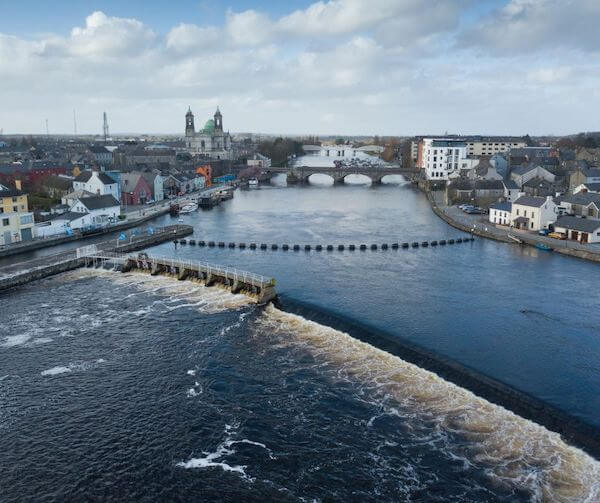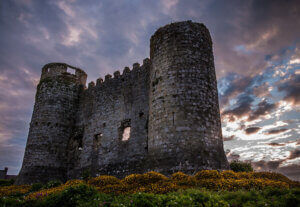Most people who visit Ireland skip over the middle of the country, but that's a shame because there is so much to do and see in Ireland's Midlands region.
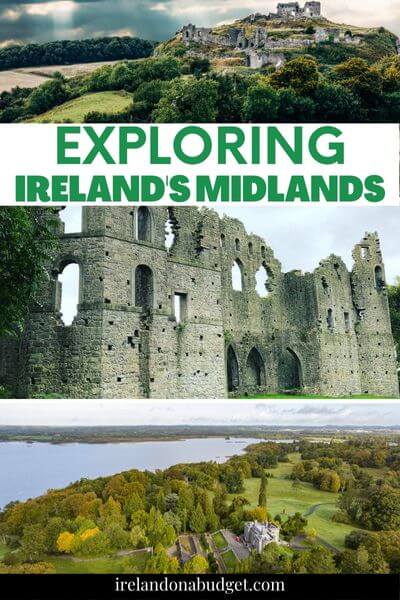 This post contains affiliate links, and I may earn compensation when you click on the links at no additional cost to you.
This post contains affiliate links, and I may earn compensation when you click on the links at no additional cost to you.
Driving from Dublin to Galway, for example, will certainly take you through this part of Ireland, but you’ll only get a fleeting glimpse of it.
And even though it doesn’t have a coastline, there are plenty of lakes, drumlins and other natural assets to make up for it.
Counties Laois (pronounced Leesh), Longford, Offaly and Westmeath are generally considered part of the Midlands region.
Most of that area is low-lying, meaning there are no mountains to see like you would in the West of Ireland, for example.
In fact, when you are driving in this region, you’ll notice that the land is flatter and the fields are bigger, making for larger farms as opposed to the rockier landscape of the West.
Now that you know exactly where Ireland's Midlands region is, here are some things to do and see there if you are starting out from Dublin.

- Book the best tours and guides on Tripadvisor, Viator or GetYourGuide
- Get reliable travel insurance with Travel Insurance Master
- Get the best flight tickets with Aviasales
- Rent a comfortable car via Discovercars
- Find the best accommodation on Booking.com or BandBIreland
County Westmeath
County Westmeath is a little over an hour’s drive from Dublin on the M4. Here are some things that you can see in this Midlands county.
If you’re interested in architecture and in particular, the curious attraction known as The Jealous Wall, then a stop at the Belvedere House Gardens & Park is in order.

The restored Georgian building was designed in the 18th century by Richard Cassells as a hunting lodge for Robert Rochfort, the 1st Earl of Belvedere.
The characterization of an abbey ruin is the primary attraction for most tourists interested in seeing Ireland's largest folly.
Rochfort had the structure built to obstruct the view of the nearby Rochfort House, owned by his brother George.
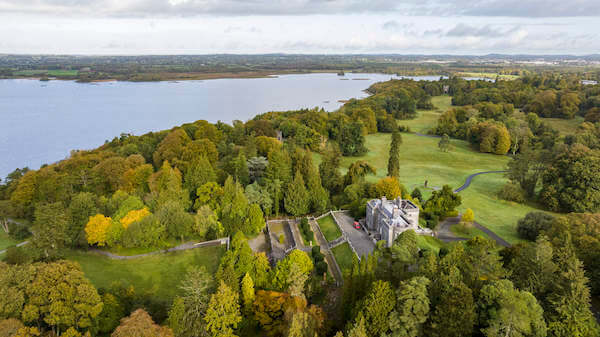
You can take a self-guided tour of the Georgian mansion and learn more about Rochfort, who was nicknamed “The Wicked Earl” after he put his second wife under house arrest for 31 years after discovering she was having an affair with another brother.
There’s much more to see and do at this 160-acre lakeside retreat, which is open daily to visitors.
Some of its other attributes include a beautiful Victorian walled garden, which includes an enchanted fairy garden that is ideal for younger visitors; an icehouse; a Gothic-inspired arch and gazebo, together with 10 kilometers (6 miles) of walks that will take you to the shores of Lough Ennell.
Travel to the Emerald Isle in 2024 with Aer Lingus Vacations
Tullynally Castle & Gardens
Drive 30 minutes or so to the north and you’ll reach the beautiful Tullynally Castle & Gardens.
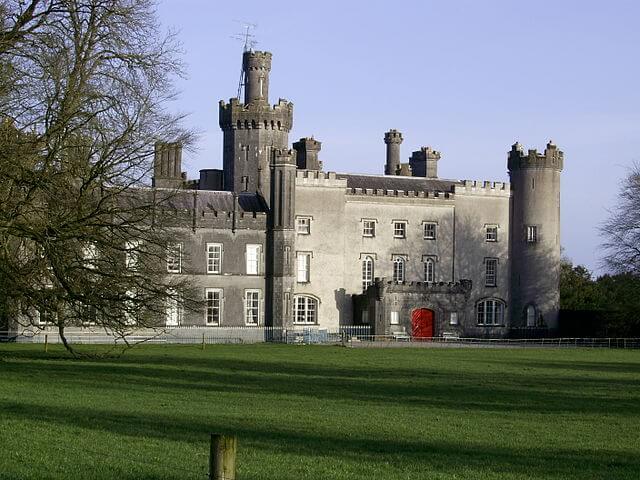
While this is a private home — belonging to the Pakenham family for many generations — you can still take a guided tour of the castle from May through September each year and see its historic Great Hall, dining room, drawing room and library, in addition to its Victorian servants’ quarters.
The estate was purchased in 1736 by Henry Pakenman and it there that a plantation house was constructed.
As with other rich families, when his grandson Thomas married a local heiress, their fortunes took an upward turn.
During the 19th century, the square house was turned into a castle, and it was in the early 1800s that the beautiful Great Hall was constructed, which is used today for regular concerts.
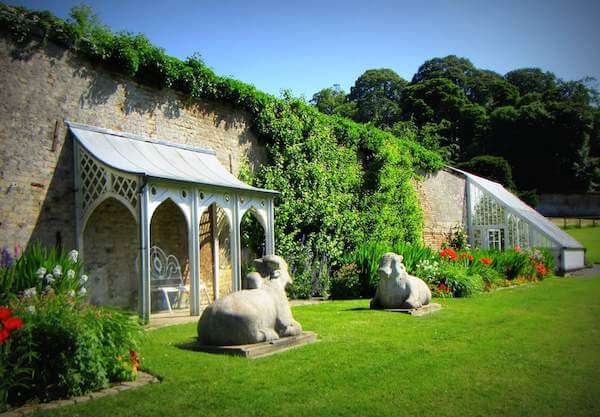
In addition to the house, you can visit the gardens and enjoy walks along the estate’s tree trails.
The estate overlooks Lough Derravaragh, the lake where in Irish mythology the Children of Lir were turned into swans.
Tullynally Castle & Gardens, as well as its tearoom and gift shop, is currently closed for the season until April, but during the spring, summer and fall, it is open from Thursday through Sunday, 11 a.m. to 5 p.m.
Tickets to the garden are €8 for adults, €4 for children, and €22 for a family.
Sean’s Bar, Athlone
If you’re looking for a respite after a day of touring County Westmeath, Athlone is the perfect place for it.
The bustling town, once a garrison stronghold, contains antique shops and other popular stores, colorfully painted houses, an interesting castle, and Ireland’s oldest pub, which dates to 900 A.D.
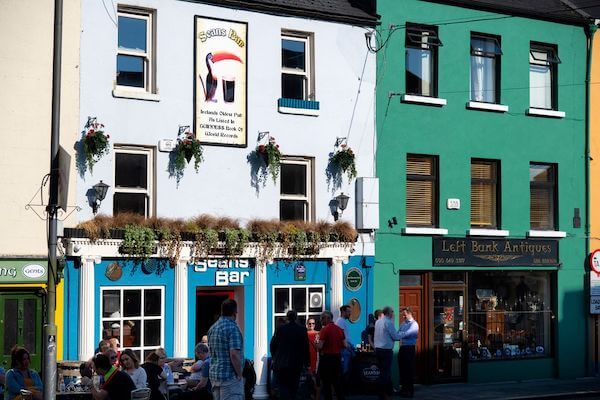
During a construction project in 1970, workers at Sean’s Pub found old coins and evidence of wattle and wicker in its walls, a material that would have been common in the 10th century.
The coins and the walls are now on display at the National Museum of Ireland in Dublin, although you can still see parts of that old wall in the pub to this day.
The Hill of Uisneach
While it might not seem like much to the casual observer, this place in Ireland's Midlands — believed to be the “sacred center of Ireland” — was once the meeting point of Ireland’s ancient provinces, a place where laws were made, and where great celebrations took place.
Before Tara, it was where the High Kings resided. And in pre-Christian Ireland, it was also a place of worships for the druids.
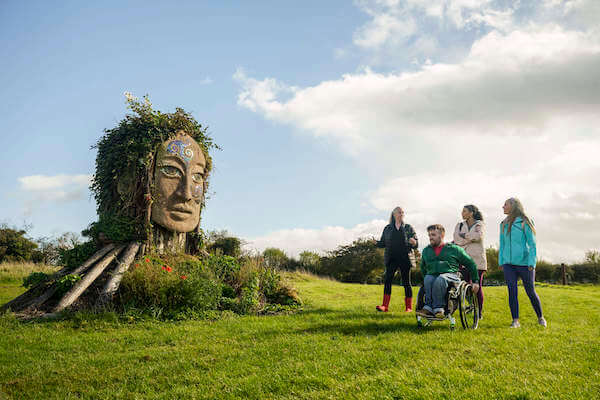
Even St. Patrick visited Uisneach during the 5th century in the hopes of constructing a church on the hill. And St. Brigid, Ireland's female patron saint, is said to have visited too.
In more modern times, James Joyce — fascinated by the stories associated with Uisneach — included it in his novel, Finnegan’s Wake.
And each year at the beginning of May, the Bealtaine Fire Festival takes place.
The only way to get a full appreciation of this special place is to take a guided tour since the site is on private land.
Kilbeggan Distillery
Known as the oldest whiskey distillery on the island of Ireland, you won’t want to miss this attraction when you’re exploring Ireland’s Midlands.
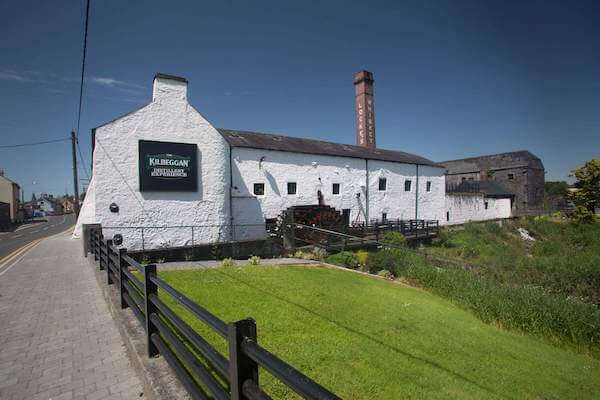
The distillery was founded in 1757 by Matthew MacManus but went into bankruptcy in 1954. It took the village of Kilbeggan and its people to proudly bring it back to life.
You’ll discover more about the fascinating story behind the Kilbeggan Whiskey Distillery and get to taste its excellent whiskey on the Kilbeggan Distillery Experience.
County Offaly
Another county with interesting attractions is County Offaly, formerly known as King’s County in honor of Philip II of Spain, who also served as King of England and Ireland through his marriage to Queen Mary I.
While you’re traveling through this Midlands county, be sure to stop at the following attractions.
Birr Castle
Birr Castle dominates Birr, a town that boasts beautiful tree-lined streets and Norman-styled buildings.
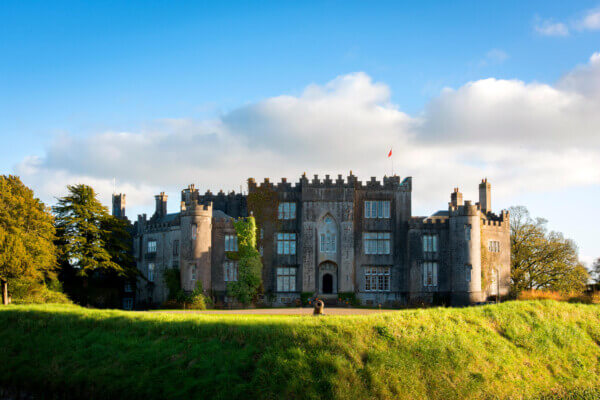
The 850-year-old castle, while a tourist attraction, is also the home of the 7th Earl of Rosse and his family and as such, the residential areas of the building are not open to the public.
The grounds and gardens are, however, accessible.
What draws many visitors to Birr Castle is the science museum, which houses the “Great Telescope,” which was constructed in 1845 and actively used until the beginning of the 20th century.
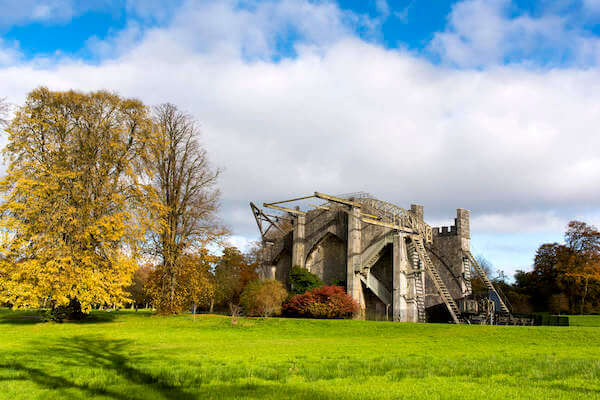
In fact, the telescope was the biggest in the world for over 70 years.
Other interesting things to see on the Birr Castle estate include the oldest wrought-iron suspension bridge in Ireland; garden terraces; a grove of Giant Redwood trees, the largest outside of California, as well as other notable features.
Get Wifi in Ireland with Wifi Candy – take 10% off with code IOB2024
Clonmacnoise
Unlike Birr, Clonmacnoise isn’t easily accessible to the motorway that runs from Dublin to Galway, so you’ll have to take a detour.
Nevertheless, it is totally worth seeing.
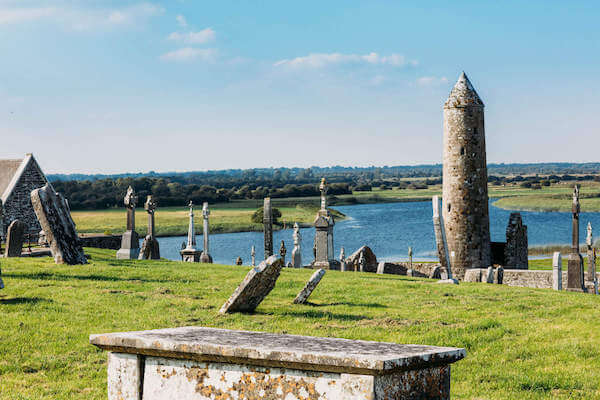
Founded by St. Ciaran, Clonmacnoise was once a major center of religion in Ireland beginning in the 9th century.
In fact, from the 9th through 11th centuries, it was the burial spot of choice for some of the country’s most important people, including Turlough O’Connor, King of Connacht, and his son Rory who are reputedly buried there.
After numerous raids by the Vikings, the native Irish and the Normans, Clonmacnoise was largely abandoned by the end of the 13th century.
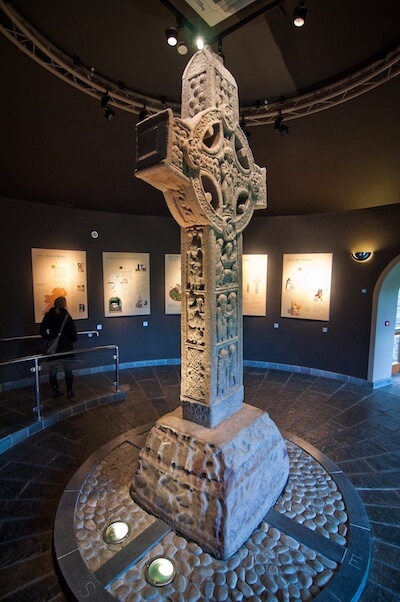
Today the site located on the banks of the River Shannon includes nine ruined churches, two round towers, a castle, as well as several stone crosses and cross slabs.
The most well-known of its artifacts includes the Cross of the Scriptures (a replica is outside, but you can find the original in the visitor’s center).
The 4-meter (13-foot) cross is one of the most beautiful in Ireland, displaying scenes from the Crucifixion, the Last Judgment and Christ in the tomb.
This peaceful site is open year-round except on Christmas Day.
Lough Boora Discovery Centre
Who would have thought that a bog smack in the middle of Ireland could be transformed into a beautiful sculpture park?
Well, that’s exactly what has happened at the Lough Boora Discovery Centre, once an active bog and part of the Boora Bog Complex that was mined for years by Bord na Móna (Irish Turf Board).
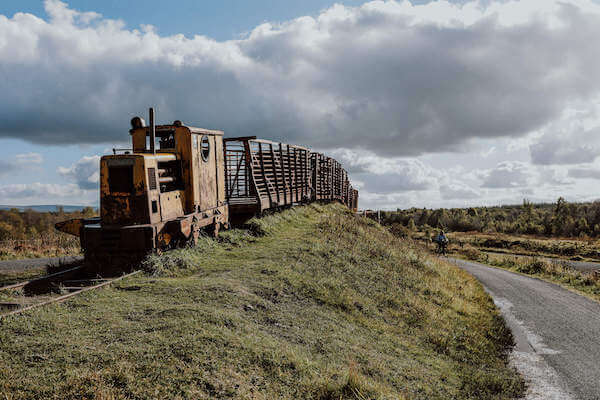
Its main purpose was to develop the country’s peatlands and in doing so, the area was stripped of plants and then mined for peat, more commonly referred to in Ireland as turf, which still provides many households with heat.
A rusted old yellow train welcomes visitors to the park.
The “Sky Train” harks back to a time when workers used it to haul fuel from the bog.
The engine of the train is hooked to six cars and a tea hut caboose, where the company’s rail workers would stop for a cup of tea and a bite to eat.
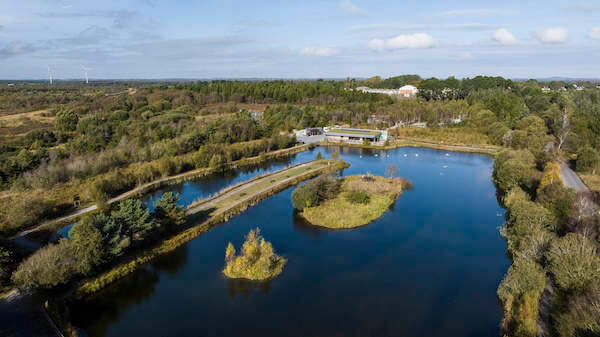
Ireland’s bogs are important sources of biodiversity, which is what you’ll find in this beautiful place, along with a series of sculptures made up of timber, stone, pieces of locomotives, and rail lines.
There’s so much more to do here year-round, including the chance to walk and cycle on its many trails as well as bird watching and angling.
The close to 5,000-acre park is a 30-minute drive from Clonmacnoise. When using Google Maps, be sure to type in “Lough Boora Discovery Park.”
Guided tours are available for groups only.
Tullamore D.E.W Visitor Centre
An 18-minute drive east will get you to the Tullamore D.E.W. Visitor Centre.
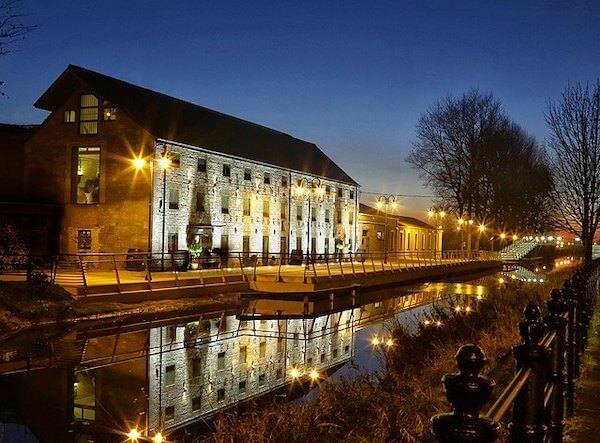
Tullamore D.E.W. whiskey is a popular brand worldwide and owes its fame to founder Daniel E. Williams who established it in 1829 after working his way up from stable boy to manager and eventually owner of the company.
Take a guided tour of the visitor center, also known as the Old Bonded Warehouse, and get a behind-the-scenes look at how the world-famous whiskey is distilled.
Enjoy a welcome Irish coffee and spend time in Ireland’s only custom-built warehouse snug discovering the art of whiskey blending before tasting three of Tullamore D.E.W.’s award-winning whiskeys, and then create your own blend of Tullamore D.E.W.
County Longford
Lakes, bog, pastureland, and wetlands make up much of County Longford, which means that if you’re into water activities, Longford is a county that you should check out.
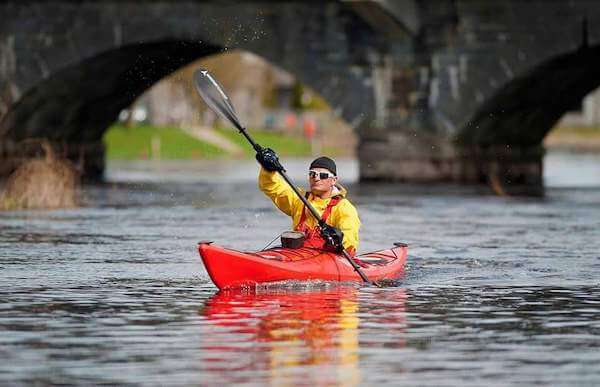
In fact, Longford boasts the longest county shoreline with the Shannon, Ireland’s longest river, and there are ample opportunities to enjoy its lakes too, including Lough Gowna and Lough Ree.
Kayaking is a popular activity in County Longford and there are several companies offering kayaking expeditions, such as Alan’s Yippee Kayaking on the Royal Canal; Inventure Water Sports, which offers visitors the chance to paddle board or take a kayaking tour of Lough Ree’s many islands, or the chance to engage in stand up paddling or kayaking on the River Shannon with Mid Ireland Adventure.
You can find more information on water-based activities to enjoy in Longford at Longford.ie.
Experience Shannon River Road, Water & Old Rail Trail Adventure with Tours by Locals
Corlea Trackway Visitor Centre
If ancient Irish history is of interest to you, you’ll find the Corlea Trackway Centre fascinating.
An Iron Age bog road constructed from oak planks is the centerpiece of this popular attraction, which is located near the village of Keenagh in South County Longford.
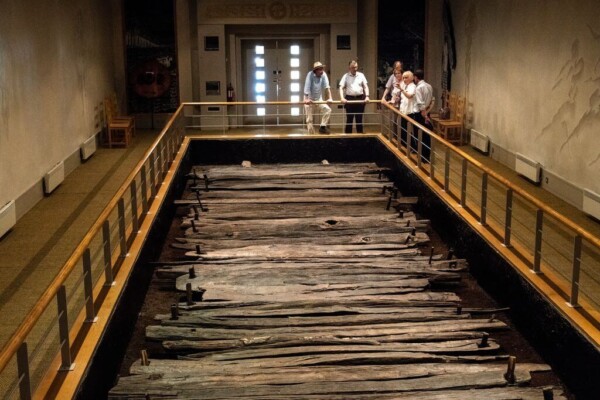
The discovery was made in 1985 when men harvesting machinery on the nearby Corlea Bog uncovered the massive trackway, which experts believe was constructed in 148 B.C.
Locals call it the “Danes’ Road,” and it is the largest of its kind to be unearthed in Europe.
At the visitor center, you’ll see a 59-foot-long stretch of the road that has been carefully preserved.
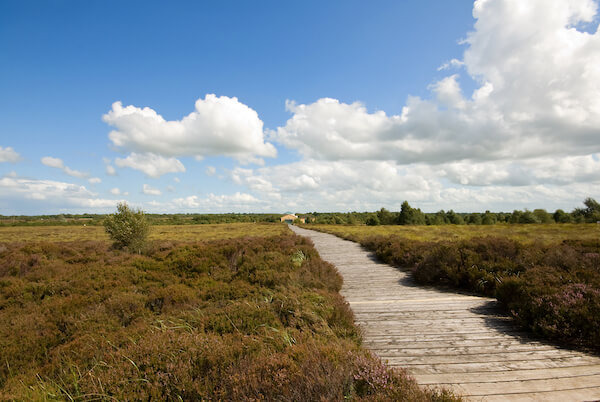
While today, the surrounding landscape is relatively flat, back in the Iron Age, the area was covered by bog, quicksand, and ponds and surrounded by dense woodland.
This was an ideal environment for preservation of the road, which had been hidden away for two Millenia.
Admission to this attraction is free.
Find your Irish Ancestors at Ancestry.com
County Laois
County Laois is a short 1 hour and 25-minute drive from Dublin. It is often overlooked by tourists who are on their way to other, more well-known places in Ireland.
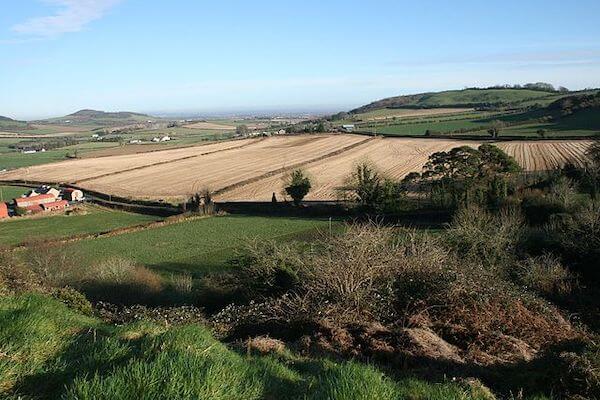
The county was once known as “Queen’s County” in honor of Queen Mary I, also known as Mary Tudor.
It is the most landlocked county in Ireland.
The counties that border it, including Tipperary, Offaly, Carlow, Kilkenny, Kildare and Westmeath, are without a coastline.
Despite that, there is a lot to see here, including these attractions below.
Heywood Gardens
If gardening brings you a lot of joy, you’ll want to experience this beautiful attraction in the heart of County Laois.
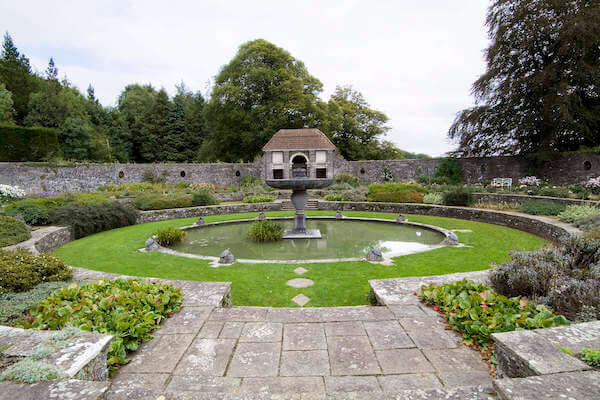
It was developed in the late 18th century by Michael Frederick Trench, a politician, landowner, and architect under the direction of the famed architect James Gandon, who also designed the Custom House and Four Courts buildings in Dublin.
It was considered at the time to be one of the finest romantic landscapes in Ireland.
One of its most unusual features is its sunken garden with an elongated pool and a grand fountain in the center.
The attraction is free to visit.
Emo Court House & Gardens
The impressive Emo Court was also designed by Gandon in 1790 for the Earls of Portarlington.
During the 20th century, it was owned by the Jesuits.
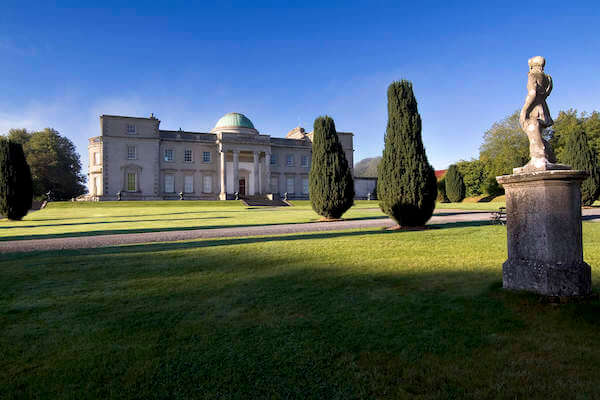
The grounds, which include formal lawns, a lake, and several woodland walks with various fine trees and shrubs, are open and free to visit.
The house is currently closed for renovations, but visitors can walk around the grounds.
Admission is normally €8 for adults, €6 for groups/seniors, €4 for children and students, and €20 for a family of 4.
The Rock of Dunamase
You’ll get stunning views of County Laois from this impressive hilltop perch.
It was on the Vikings’ radar in 842 when they stormed the Christian settlement and several hundred years later, in the 1100s, it was known as an important Anglo-Norman fortification.
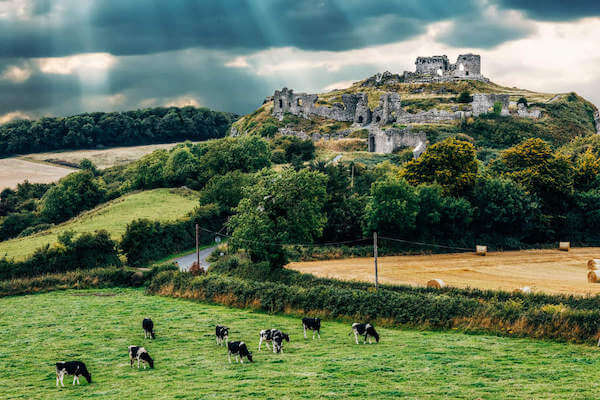
In fact, Dunamase (located near the town of Portlaoise) was part of the dowry of Aoife, the daughter of Diarmuid MacMurrough, King of Leinster, who famously married the Norman conqueror Strongbow in 1170.
Strongbow later gave the castle to his son-in-law William Marshal, the Earl of Pembroke.
It was abandoned in the 1300s by the O’Moores, a prominent family in the county, and was destroyed in 1651 by Oliver Cromwell’s forces.
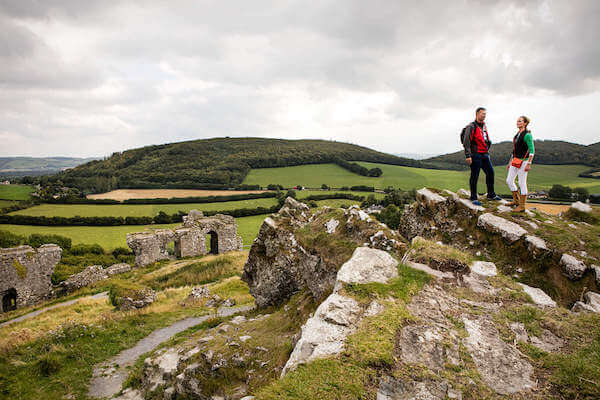
Crumbling ruins are what is left of the once state-of-the-art building in the 1300s, although I would add that it’s definitely worth a stop if you want to imagine what it might have been like in its heyday and to soak up the views from the top.
The site is free to visit. You can grab an audio guide from the Laois County Council website.
Donaghmore Workhouse Museum
If you know anything about the Great Famine in Ireland, you’ll know that many poor tenants who were evicted from their homes had no other choice but to enter the local workhouse.
By clicking on the Amazon link above, I may earn a small commission from the Amazon Associates Program. However, you will not incur any additional costs by doing so.
First introduced in Ireland in 1703, the workhouse, or poorhouse as it was often known, was a British invention designed to house the destitute and poverty-stricken.
Families were routinely segregated, with females in one section and males in another. Children, too, were separated from their parents and sometimes never saw their parents again.

At the Donaghmore Famine Workhouse Museum, you take a self-guided or guided tour of the facility.
Various exhibits explain Ireland’s socio-economic conditions that led to the establishment of such grim places.
The museum also houses an agricultural collection that consists of farm implements such as ploughs, barrows and tillers, as well as butter making equipment.
The museum is open Monday through Friday, from 11 a.m. to 5 p.m. Admission is €5 for adults and €3 for students and seniors. Family tickets cost €10.
Are you interested in exploring Ireland’s Midlands region? Let me know in the comments below.

